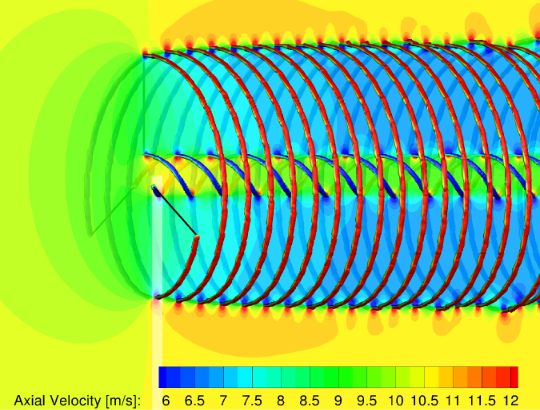Engineering Aerodynamic Methods for Analysis of Wind Turbines
The design of a wind turbine (WT) involves several computations of the blade and rotor aerodynamics and for a wide range of conditions. Even if CFD based on the Navier-Stokes equations is nowadays the dominant tool for WT analysis, there is room for efficient engineering methods to provide first estimates of WT performance.
These efficient methods allow for computations at different operating conditions as well as a range of blade geometries.
In this project differentengineerings methods are implemented, analysed and compared with 3D CFD simulations and
experimental results. Most of the methods can make use of a database of experimental or CFD-generated data for the sectional aerodynamics of the blades.
Methods
The methods developed in this project include the Blade Element Momentum
method with prescribed (Kockure-Tangler and Helical) or free wakes methods. These methods account for
tip losses, non uniform inflow profiles and tower shadow effects. The implemented
free wake method involves a discretised time marching method coupled with a panel
method to account for the presence of the WT tower.
Results
These methods are applied on a range of rotors varying from small wind tunnel models
to 10 MW off shore wind turbines. The prescribed and free wake models provide, in addition
of the performance characteristics, predictions of the wake shape and the vortex
core locations, as shown in the following figures.
